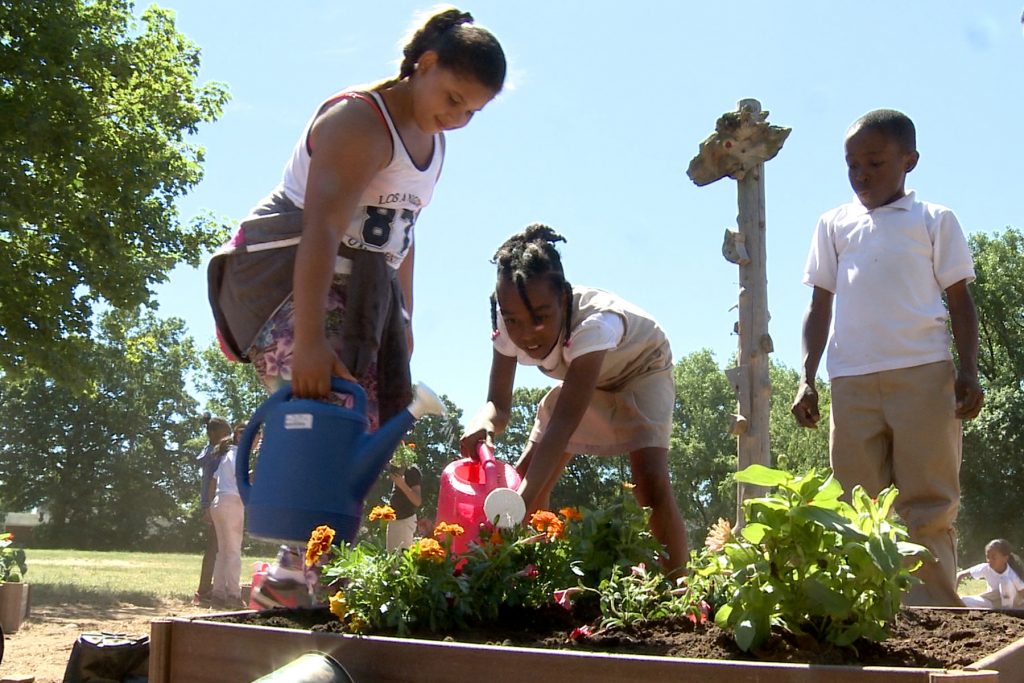Creating an Environment for Diversity, Equity, Inclusion & Justice to Flourish

To create a culture that fosters diverse perspectives and inclusive values, we invite educators to envision a garden as a model for developing an equitable, inclusive, and just classroom. By taking time to plant seeds of change, by identifying and rooting out weeds before they can stifle growth, and by nourishing an environment wherein a garden can flourish with diversity, beauty, and life, we are cultivating a classroom that invites all students and voices to grow together with authenticity, kindness, and trust.
The following reflections highlight the process & activities we cultivated in our April 2021 webinar that focused on Justice, Equity, Diversity, & Inclusion in STEM classrooms & programs. Prior to the webinar, the educators were asked to read and reflect on the following three articles:
- Designing for Social Justice in Science Teaching and Learning: Working Toward Rightful Presence
- Making Room for Transgender and Non-Binary Students in the Classroom
- Beautiful Differences
Before starting our discussion based webinar, we established a community agreement for how we would interact with one another. As another way to create safety, we instituted affinity groups for each article discussion that participants were able to self-select.
Planting Seeds and Using Tools for Equitable Teaching
Culturally Responsive Teaching practices are the tools we can use to help cultivate and encourage the type of learning environment that invites everyone to thrive. As you watch the following SciGirls video on Culturally Responsive Teaching, write down the questions they pose and take time to reflect on them.
SciGirls Snapshots: Culturally Responsive Teaching
The following reflections highlight the discussions and insights we gleaned from exploring the articles above.
Pulling Weeds: Identifying Bias and Growing From Mistakes
Discomfort is a natural part of growth. During our workshop we took time to discuss the meaning and value of identifying those moments of mistakes, or those times when we discovered a bias, false assumption, or stereotype within ourselves. Consider the following insights from our discussion as you reflect on your own process.
- Grow from mistakes: Making mistakes reminds us that we, too, are growing. Responding in proactive ways ensures that those mistakes are not made again: that is teaching with intentionality. How we learn and grow from mistakes is what defines us. Taking time to revise lessons and invest in our students by anticipating challenging moments honors students’ experiences and empowers everyone.
- Question assumptions: We must examine our own reflexive beliefs and assumptions if we are to create an inclusive classroom. Our perceptions can be skewed by our experiences and opinions. When making efforts to learn and understand people with differing abilities, heritages, ethnicities, races, ages, sexual orientations, gender identities, or religions, maintaining a perspective guided by curiosity and an unassuming mind can lead to fresh insights and meaningful connections.
- Trust intent and acknowledge impact: Trust yourself and your students to have good intent but know and understand that just because we have good intentions, does not mean that our words or actions will not have a negative impact. Allow yourself and students to acknowledge the impact and talk through that impact rather than ignoring those impacts and hurts. We used the word “ouch” to identify times when something was said that did not land well.
Nourishing the Garden
Tending a garden takes time, patience, care, and kindness. Those elements are the sunlight and water that can lead to a culture of acceptance in the classroom. During the workshop we also talked about ways to bring that sunlight and water to our classroom garden.
- Learn about culture: When we make an effort to learn about our students, we make it clear that we are interested in understanding their experiences. We can make space for every student in the classroom. When everyone has a voice, everyone is empowered.
- Speak to care: Use inclusive language to transform your learning environment. By taking the time to learn preferred pronouns, we provide a nourishing environment that values everyone.
- Make awareness your practice: Culture is communicated through small, daily interactions. By taking time to consider our practices, words, assumptions, and procedures we can develop new, inclusive techniques that will become second nature. Subtle changes lead to profound transformations.
- Be inclusive not exclusive: Inclusivity is about opening doors to all students, including those who often feel neglected or misunderstood. The messages you send on a day-to-day basis communicate that everyone is valued.
- Empower all students: When we provide opportunities for our students to speak and share their experiences, we empower everyone to learn and grow. Personal narratives invite empathy and connection. Providing an environment that fosters communication and kindness invites positive developments and forges genuine connections.
- Create and collaborate: Relationships enable us to solve problems together. Inclusivity is not about one person forcing change. Rather, for long-lasting growth to occur everyone must collaborate. Turn to colleagues and students for ideas, insights, and help. As you rely on others to build a classroom culture, you send the message that all are invited to participate in the process of growth.
As you create an inclusive, rightful presence, and equitable classroom, there will be bumps, weeds, and messiness, but there will also be beauty, connection, and growth that will inspire and change you and your students. Get support when you or your students need it and learn and grow along with them.
Additional Resources to Explore
In addition to the articles and videos we shared during the webinar, there are many others to review. Here is a sampling of other resources you may wish to review for additional ideas.